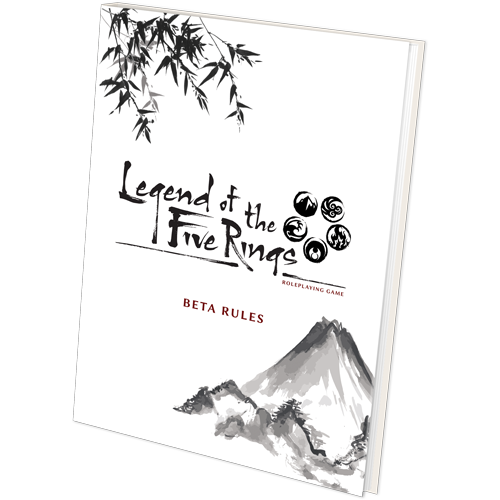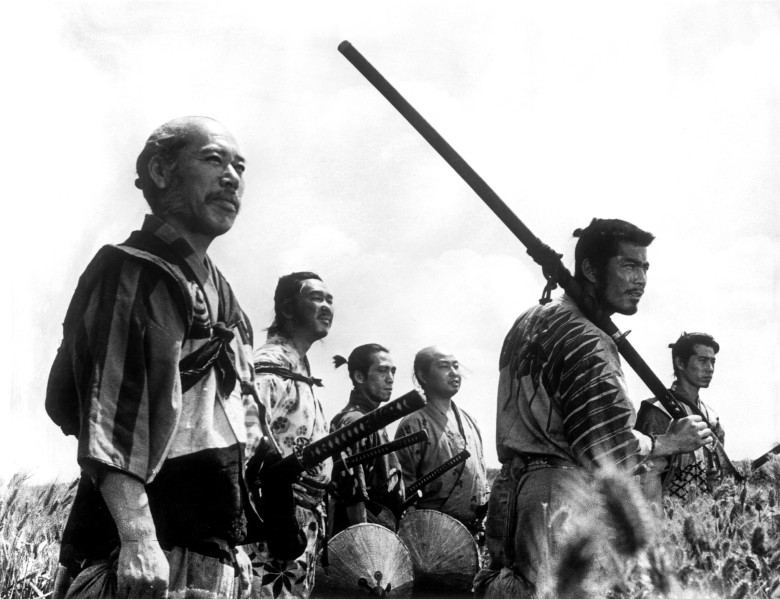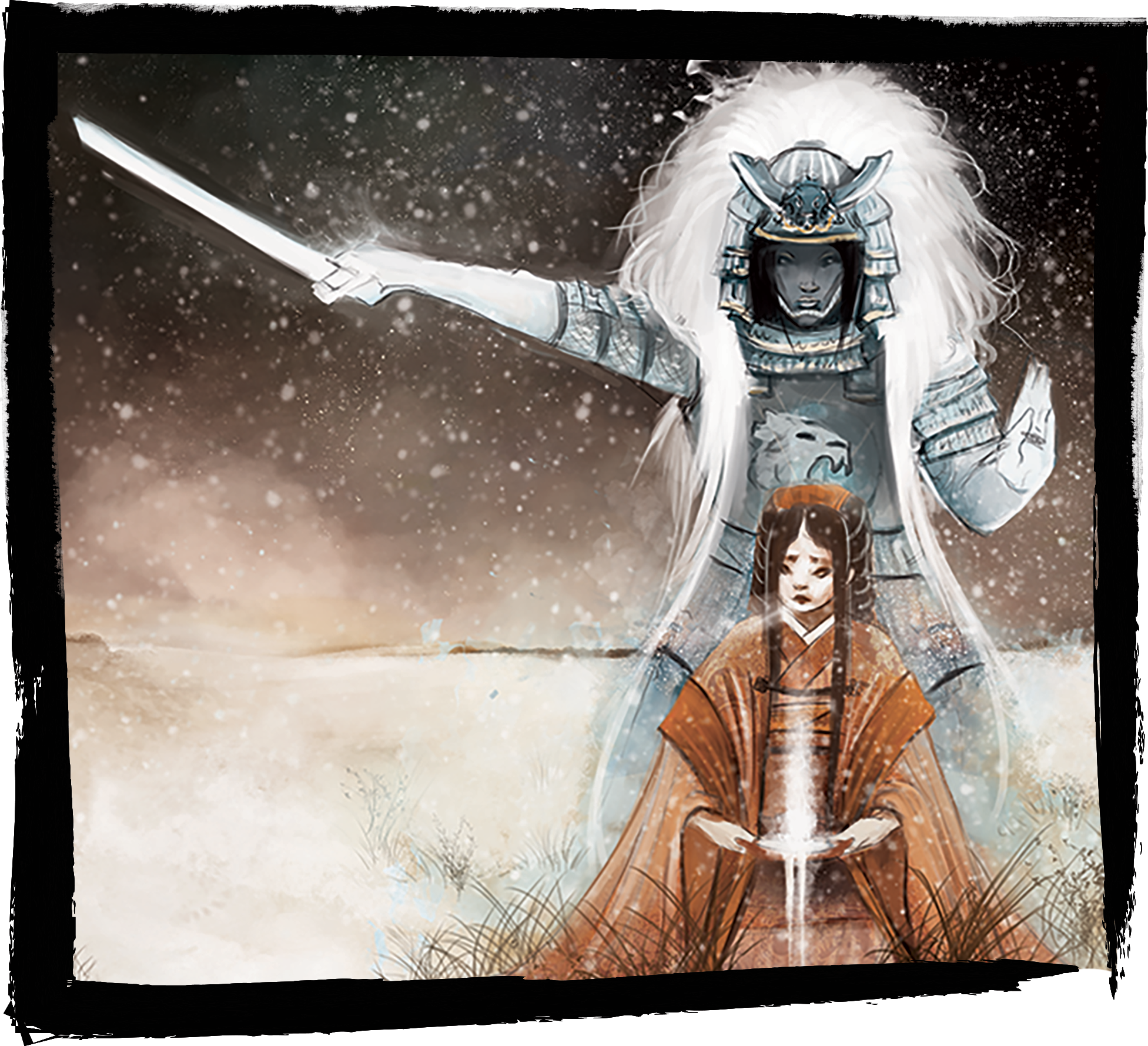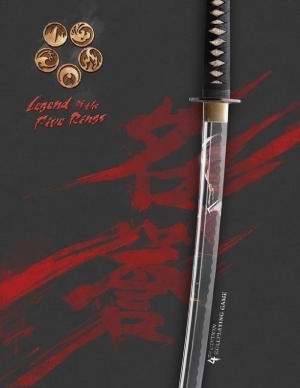Mechanics in a game serve as more than simply the way to vary the experience. In fact, the best games serve mechanics alongside the narrative to express the themes it wishes to explore. While this has been explored at length in video games, it is just as relevant in the field of tabletop game design.
Imagine playing Settlers of Catan without the initial competition of placing your settlements, or Ticket to Ride without the exclusivity of the railroad tracks. Imagine playing Dungeons and Dragons without the level based approach to character advancement, loot as rewards, or the cold heartlessness of a d20 determining the life and death struggle of your character. Whether it is exclusive competition for resources, the necessity of earning enemies to succeed, or a steady escalation of power in an arbitrary world, the mechanics of a game can serve to amplify the tone and narrative of a game in addition to merely providing structure.
While some elements can be altered, substituted, or outright abandoned – especially in a game like Dungeons and Dragons that relies on flexibility – the mechanics of gameplay steers it towards a specific type of fun. They reflect the tone of the game’s intentions and are essential to presenting a holistic approach to the overall experience. So when you stumble upon a mechanical mismatch to that experience, it’s hard not to notice.
Mechanics As Tone
In order to better understand the finer points in my critique, I highly recommend the following videos from Extra Credits and NPR about the subject of game design, game mechanics, and tone:
I also feel that the Extra Credits video In Service to the Brand – Why Bioshock Infinite Failed brings a very relevant piece of the puzzle ahead.
The Legend of the Five Rings LCG is a game wherein a player becomes a provincial daimyo of a Great Clan in the rich, vibrant land of Rokugan, a land filled with fantasy samurai. In it, they conduct a small-scale war with a rival daimyo, securing victory by either conquering their rival’s Stronghold with military or political skill, earning universal acclaim for their piety and honor, or rendering their rival’s own reputation worthless. Throughout this back-and-forth battle looms the implacable advancement of time, with every turn providing both its surge of resources in the form of Fate and Conflict cards, but also its steady removal of resources through the Fate phase. Each of the mechanics of the L5R LCG serve effectively to communicate its tone and themes to the player, creating a deeply immersive game when combined with its excellent visual aesthetic and organized play support.
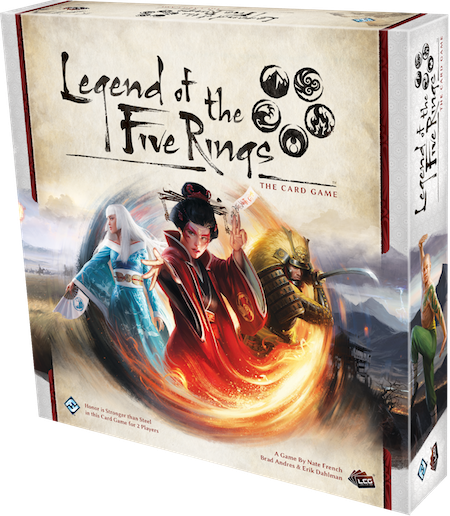 The act of constructing a deck in the LCG is choosing which resources will be available to you in your fight. The interplay of Actions during Conflicts simulates a very intense tactical interaction with an opponent. Bidding Honor to draw Conflict cards and winning duels asks the question of how much victory is worth to you. And the gaining of Fate at start of a turn only to discard it later in the turn serves to capture the philosophy of mono no aware, presenting a cycle of gain and loss where nothing is permanent.
The act of constructing a deck in the LCG is choosing which resources will be available to you in your fight. The interplay of Actions during Conflicts simulates a very intense tactical interaction with an opponent. Bidding Honor to draw Conflict cards and winning duels asks the question of how much victory is worth to you. And the gaining of Fate at start of a turn only to discard it later in the turn serves to capture the philosophy of mono no aware, presenting a cycle of gain and loss where nothing is permanent.
Moreover, just as each of the mechanics of what you can do in the card game helps convey its premise, what you can’t do can be equally important. You are only allowed one copy of Unique Characters and Attachments, for instance, showing them as individuals with limited ability to act. Similarly, cards from another Great Clan can only be put into your Conflict deck, and then only a very limited amount, showing the reluctance of other factions to become involved. And perhaps most tellingly, if given a choice between a course of action which will change the board state and a course of action which will not, players must favor change.
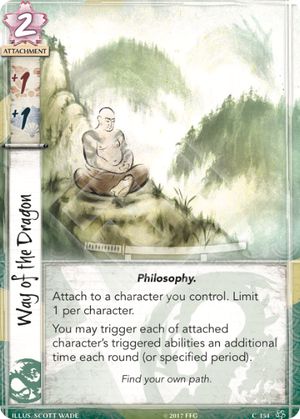 Beyond how engaging it is as a game, it’s also a testament to how well-constructed the game is that every element of play works together to immerse its players in its world. Players are encouraged to find loyalty in a Great Clan which matches their philosophy and play style, and the course of the world’s history hinges upon their choices. Playing Lion or Unicorn, one feels propelled forward in a very aggressive style, whereas playing Phoenix or Crab favors a more defensive approach. And that is to say nothing of just how tricksy the game can feel playing when portraying the Scorpion or the Dragon. The success of the L5R LCG is critically linked to this immersion of its gameplay, due in no small part to how much its mechanics inform and guide its narrative.
Beyond how engaging it is as a game, it’s also a testament to how well-constructed the game is that every element of play works together to immerse its players in its world. Players are encouraged to find loyalty in a Great Clan which matches their philosophy and play style, and the course of the world’s history hinges upon their choices. Playing Lion or Unicorn, one feels propelled forward in a very aggressive style, whereas playing Phoenix or Crab favors a more defensive approach. And that is to say nothing of just how tricksy the game can feel playing when portraying the Scorpion or the Dragon. The success of the L5R LCG is critically linked to this immersion of its gameplay, due in no small part to how much its mechanics inform and guide its narrative.
Dashed Expectations
Sadly, in many of the same ways in which the LCG has succeeded, the L5R RPG Beta has failed to deliver.
I came to the L5R RPG Beta with high hopes. The L5R RPG is one of my longtime loves in gaming. The presence of the RPG Beta alone confirmed for me that Fantasy Flight Games intended to continue the game into the future, making it the second pillar on which to rest the brand. I eagerly signed up for the RPG Beta, tore through the rulebook, and quickly organized a series of sessions to run through the first module, A Ronin’s Journey. However, what I found left a lot to be desired, which I will go into detail about in a separate piece next week.
The RPG Beta did have a few things going well for it, and I feel it made several choices which were deeply needed to reflect more modern RPG design:
- À la carte Techniques allowed for a greater freedom of play, letting players focus on their chosen aspects of Rokugan.
- Creating Approaches for each Ring and each family of Skills created an effective vocabulary for communicating in-game actions, making for easier communication between players at their GM.
- Replacing a hit point based combat with a system of Fatigue and Injury created a far more cinematic feel to combat, where the purpose is to avoid getting hit rather than being tough enough to take it.
- Strife introduced a much needed social / mental hit point system, and the process of becoming Compromised and Unmasking serves well to showcase a society where maintaining a stoic demeanor is absolutely essential.
- Even the Narrative Dice presents an interesting challenge, where a player must balance their Success with Opportunity and Strife to achieve their desired goals.
Yet many of these changes fundamentally alter the very tone of the game they’re representing. In previous editions of the RPG, for example, the Roll and Keep mechanic had players build their dice pool, declare a number of Raises to the Target Number stated by the GM, and then roll their dice to meet or exceed their new TN. This set the tone the game as one of risk versus reward, which characters excelled not through random chance but by having the confidence of their skills.
The Narrative Dice, on the other hand, does the exact opposite. It presents a Rokugan where excellence at a task is a product of happenstance and not one’s aptitude.
Similarly, advancement in each School was a rigid progression of Techniques, with the limited deviation and few exceptions to the rule. This tonally presented Rokugan as a firmly traditional society with strictly enforced conformity in training. By switching to an à la carte approach, Rokugan is a far more open world, where characters are encouraged to find their own path to achievement. It also opens the possibility for secret Techniques to be learned through hidden sensei or developing values that deviate from the rest of your Great Clan.
Moreover, Replacing Wounds and Wound Ranks with direr consequences for being actually struck by a weapon sets the tone of a game where combat is far closer to the chanbara films of the Jidai-geki genre, where a master swordsman kills their opponent in a single, decisive strike.
That all being said, although each of these examples change the feel of the L5R RPG, none of them are out right failures per se. They are different, but they are at least consistent and fun.
The Strife With Strife
Strife, on the other hand, fails in providing the basic fun of a good roleplaying game.
At its core, Strife strikes an interesting tone, but how that Strife is gained is fundamentally flawed. Strife as it exists is gained primarily through…choosing Narrative Dice with Strife icons on them. While theoretically interesting, the way this operates in practice becomes punishment when attempting to do next to anything. Fighting off a life or death threat? Pick the wrong dice and you’ll be too upset to roll the necessary dice to stay alive. Try to impress your daimyo with your honesty? Roll poorly and you may become emotionally unstable instead. Examine a door to figure out why it’s stuck the wrong way? A bad roll has you nearly flipping out for no reason.
Gaining Strife through the Narrative Dice makes sense in dramatically intense scenes, like combat or deep courtly intrigue, but it makes zero sense in downtime sequences or where emotional stress should not be commonplace. Worst of all, it punishes players for attempting to do just about anything. The Unmasking mechanic provides some control over reducing their character’s Strife, but doing so is always costly and has the potential to sidetrack the entire narrative. Strife will likely be gained on every single roll, making every situation effectively a psychological combat against a world trying to upset them.
This dissonance grows even sharper when you consider how Strife interacts with Ninjō vs Giri, the heroic struggle of human desire (Ninjō) against the demands of one’s sworn duty (Giri). Ninjō vs giri is presented in the Beta as the root of Samurai Drama, and I was very interested when it was first brought up as a worthwhile inclusion. As someone who has consumed a vast amount of media over the years regarding the subject of samurai drama, and heroic drama in general, I would absolutely agree that it is central to the genre.
Why then is it so irrelevant to a system clearly inspired by it?
If a character encounters their ninjō or giri during a session of play, they gain Strife if they don’t adhere to this code. Yet while the Strife gained isn’t insignificant, there’s also literally no incentive to go the opposite way. As such, Strife as it currently exists is there solely to punish the characters for participating in the narrative.
The L5 Beta contains two specific rules in an effort to make the ninjō vs giri theme relevant, but this is to the detriment trust in the Game Master’s ability to weave a compelling story. The first, the Discord Tracks, is an arbitrary tool designed to force the GM into featuring a character’s ninjō or giri in any given session – regardless of narrative – which will likely be unnecessary to all but the most inexperienced storytellers.
The latter, the Pivotal Scene mechanic, allows a character to spend a Void Point to declare a Pivotal Scene to their character. This scene must be focused around their ninjō or giri, but does not need to be within the current moment of the narrative. Effectively, the character spends a Void Point to pull the focus of the game onto themselves so they can have their special moment without needing to contain anyone else at the table. While in theory this hands narrative agency to players (and isn’t inherently a bad idea), it does so in a way which does not trust a GM to develop a story that will already provide these choices to their players. It also rewards a particular type of disruptive player with what they desire the most: the game’s undivided attention.
Solely For The Brand
It’s not just Strife that fails to provide a consistent and fun tone to the theme of ninjō vs giri. The entire system of Honor, Glory, and Status in the Beta is a rough copy and paste effort from previous editions and only interacting with the theme of ninjō vs giri only by awarding Honor or Glory for successfully fulfilling either, which creates two distinct problems all their own.
The first is rooted in how poorly the Honor, Glory and Status system fits with the new system. Having high Honor or Glory grants a character the ability to reroll two dice when convincing people they’re honorable or famous. Having a low Honor or Glory forces them to reroll. While the Beta introduces an interesting concept of staking Honor or Glory on achieving a particular task, it doesn’t particularly interact with the with ninjō or giri. Instead they simply serve as a means of earning Honor and Glory, absent of any inherent choice between the two.
The second problem is the idea that a ninjō or giri can be fulfilled rather than being a deeply held philosophy driving character motivations. The system predicates upon them being temporary and situational, while the larger context of the book suggests it to be the very bedrock upon which the entire narrative is meant to stand.
Furthermore, the Honor, Glory, and Status system stands out as a particular offender of where the L5R RPG Beta suffers due to misplaced brand loyalty. Rather than creating a new system, perhaps even one modeled after the L5R LCG’s mechanic of Honored and Dishonored statuses, the designers imported the older game’s system. As is pointed out in the “In Service to the Brand” video, simply including a system from a previous game does not make your game succeed in feeling like it is still part of the brand.
While we’re on that point: why are they still Void Points? In previous editions, the Void Ring represented a character’s heroic potential, the little something extra they had going for them. It limited the number of Raises they could take on a roll and gave them a renewable pool of Void Points to activate Techniques, reduce damage, and various other useful tricks. The Void Ring in the Beta Edition, on the other hand, is its own fully developed Ring, equivalent to the other four.
So…why are there still Void Points? And why are they at all tied to the Void Ring? This undoubtedly appears to be in service to the L5R RPG brand, oddly at a point when taking a page from the LCG and remaking the system from the ground up would better allow the designers to create something which meshed positively with their existing rules.
One Step Forward, Two Steps Back
There are some RPGs I adore. These typically include games where the mechanics help set the tone. But try to imagine playing Mars Colony without the need to push your own luck. Imagine Don’t Rest Your Head without the feeling of mounting desperation. Imagine playing Amber Diceless without an Attribute Auction and with everyone having publicly available character sheets. It’s not necessarily that these games wouldn’t be as fun with different mechanics, but they would be radically different. Mechanics in games establish expectations just as much as its artwork, writing style, or setting. When designing a game, it is imperative to craft mechanics that function in a way which serves the tone of the game being presented rather than work against itself. If your inner workings clash, then the game comes out feeling rushed and sloppy. That appears to be what’s happening here.
The previous versions of the L5R RPG were far from perfect, but many of their mechanics worked to bolster the premise of a game where confident expertise succeeded more than luck, no character was safe the moment swords were drawn, and the fantastic was waiting around every corner. This new iteration makes numerous changes but fails to maintain those same tenants in the process. If Ninjō vs Giri is meant to be a driving theme of the game, one should feel the hard choice between human emotion and sworn duty in every meaningful decision your character makes. It should inform every risk and vary every time I pick up the dice to determine my character’s fate. I do not want to be told that my character must choose between passion and duty. I want to be shown that by the very act of roleplaying.
As it currently exists, the Beta Edition fails this premise and instead presents a world where samurai are giant balls of stress, liable to explode for any reason, and the only way not to be punished by the game is to simply avoid making checks, and by extension, the ongoing struggle between ninjō and giri. The GM should not be forced to make me confront my character’s passion and duty, not should I have to be primarily encouraged to do so through a scene-stealing system that strips agency away from the GM in favor of player indulgences. There needs to be better way.
It is my hope that the designers of the new L5R RPG Beta will find one. At least, if they fail, we will still have the old system to keep using, despite its flaws and problems. At least those flaws still serve a purpose.
David Gordon was a regular contributor to the site. A storyteller by trade and avowed tabletop veteran, he also has a long and complicated past with L5R. He can be reached on Twitter.
You can discuss this article and more on our social media!
Photo Credits: Extra Credits Drawing by Extra Credits; L5R Images by Fantasy Flight Games; Coin by Patrick Carlson; Seven Samurai by The Criterion Collection; Samurai Jack by Cartoon Network Studios; Books by Dany Sternfeld



